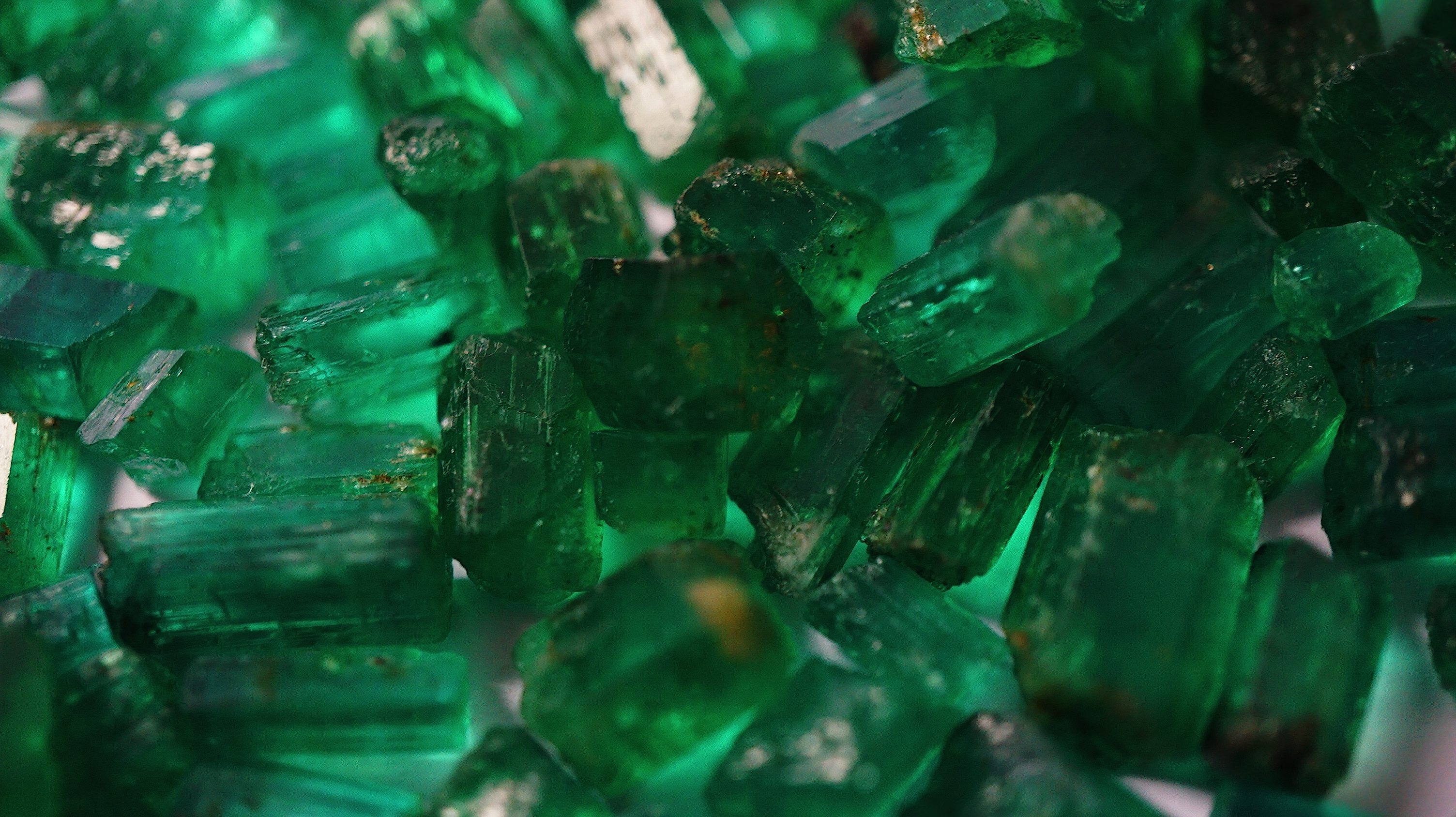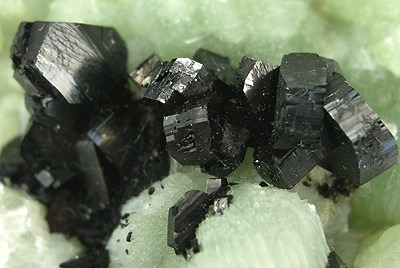_(cropped).jpg)
Gems are a traditional treasure staple in RPGs for their "ooh shiny" factor and as a convenient, lightweight way to carry large amounts of cash. Problem is most people don't know that much about the minutia of gemstones, so unless you go out of your way to attach meaning to them a 30 GP agate ends up being the same as a 30 GP obsidian or a 30 GP ruby: A very pretty rock that's shorthand for a lump sum of money. There's none of the magic and wonder that should accompany finding jewels.
Here's what we can do to change that:
First, go do some research on gems. Don't just find a chart of birthstones and call it a day, do actual research on different minerals and what goes into producing and valuing cut gems. What's the difference between a ruby and a sapphire? Why do opals refract light into internal rainbows? Which sorts of cuts make gems sparkle and which show off their color?
Read, learn, be interested. If you're knowledgeable about a subject you can give much better descriptions of it and that will make your players more excited about their new rocks.
Next, step outside the list of gems everyone knows and give them something unorthodox. Diamonds, rubies, sapphires, emeralds, and topazes are fine; but giving them a stone that's unusual will be more memorable. Throw a zircon at them, or a fistful of differently-colored beryls, a sunfire orange pearl, or a niche stone like a demantoid garnet. Make it weird, make it cool, and either describe the stone well or show them a picture of one to solidify what riches they've got.
Finally, unless the gem you're giving them is some mythic stone with a name and history of its own, don't describe it until after your players have had a chance to stop and roll dice to determine how much it's worth. Here's why:
- Letting the players roll to see how valuable each gem is makes it more meaningful. They're directly involved in determining their fortunes.
- Keeping the exact nature of the gems uncertain until the players have a chance to examine them makes it more exciting. There's a spirit of "What did we get?" that creates more impact than just being given a list of goods.
- Leaving the gems a mystery until the value is known lets you give a description with more teeth. The value of a gem doesn't just depend on what type of stone it is, it also depends on other details like how strong its color is and whether there are any cracks or inclusions in it. Once your players roll to see how much it's worth, you know the quality of that particular specimen and can tell what the stone actually looks like. A 100 GP aquamarine might be a gorgeous blue, but so full of inclusions that it's nearly opaque. Still a good stone, but not the best of its type. Meanwhile an 800 GP aquamarine looks like a perfect, sparkling drop of seawater made solid. Its only flaw is a tiny chip on the edge of a facet, barely noticeable. Both are the same type of stone, but that valuation makes a world of difference in how you describe it, so wait.
Now, how to assign values with rolls. I originally came up with these rules because I accidentally gave my players way, way too many uncut gems to individually value without some sort of system to make it fair and fast. (Something to the tune of 88,000. Oops.) It made for rules that are simple enough to be applied on a large scale, but also able to get granular if my players wanted to be specific with particular stones. It also assumes you're starting with raw uncut gem stock, something freshly mined or only roughly shaped for later faceting and polishing.
Uncut gem stock:
- Max value is 500 GP
- Roll 1d10 * 50 to determine value
- The type of gem is pure flavor and decided after a value is rolled. (I usually ask the players to give me a color, then I give them gems that are that color.)
Cut gems:
- Max value is 1000 GP
- Roll 1d10 * 100 for gems that are already cut, or the 2x the value of the uncut gem if you're giving it to an artisan for faceting.
- If more than one gem is cut from a single piece of raw gem stock, divide the GP value between the cut gems produced.
Ex: Raw stock = 400 GP * 2 = 800 GP. If 8 gems are cut from the stock, 800/8 = 100 GP each.
It takes an artisan 1 day to cut 1 gem in a traditional style. You need to pay them for their work and shop overhead each day. If you have them cut more than 1 gem from a piece of raw stock, it will take another day for each additional finished gem you request. (Because of the amount of money involved, I set daily rates for gemcutting at 10 GP/day per each artisan working and a 30 GP/day shop fee. It works out to be a noticeable but not ruinous portion of the profits, fair pay for the work the NPCs are doing.)
Unusual or custom cuts take longer (1d12+2 days) and require a specialized or highly skilled artisan. If you want to grind an emerald lens to be part of a magic scope to see into dimensions beyond your own, you need a master gemcutter; apprentices and journeymen just won't do. You'll also need at least one consultation and a detailed plan of exactly what's needed.


No comments:
Post a Comment